The hamburger is a staple of the American cuisine, a monumental dish that is simple enough to be made by the inexperienced cook and bold enough to hold more unique, memorable flavors. But what goes into the making of this mouthwatering dish? What gives it such a satisfying taste? In this post, we’re going to break down the different components of how to make the perfect burger and give you the information you need to start grilling them the way they are supposed to be!
The Perfect Burger Patty
Although this is something that may seem obvious, as you can’t have a burger without the meat, it is possibly one of the most overlooked ingredients in this hearty meal. If you pick a type of ground beef at random or what you choose is sub-par, so will the burger that you put effort into, as the overall quality of the meat has to be considered very carefully. This doesn’t mean that you must spend a fortune on it, rather it simply requires you to put forth a little more effort when looking for the cut of ground beef to use, making sure of a few very important factors that will give you the taste you’ve been searching for.
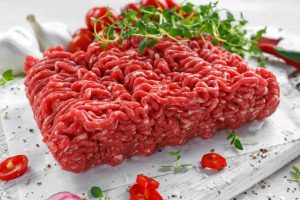
The basic principle when choosing the ground beef to use, and a basic foundation for countless culinary dishes, is fat. It is less common for us to have burgers from cows that are agile, lean, and commonly mobile, the reason for that being that their fat percentage is quite low, thus the meat is tougher and dries relatively quickly.
Fat is what keeps the meat moist during the cooking process, so when choosing the beef to use for your burgers, it is important to ensure that the fat content is at least 15 to 20 percent. Some packages may not list this exactly, as they may put 80 or 85 percent lean or a fraction like 80/20 for example, but it is vital to look at this fact to make sure there is not an excessive amount or too little amount of fat in the meat.
Seasoning and Flavoring of Beef
After the ground beef has been chosen, the option of adding additional flavoring to the meat is not a necessary step but may enhance the overall experience while eating. Common herbs and seasonings that may be mixed in with the beef prior to cooking are basil, cayenne. chives, cilantro, cinnamon, cloves, coriander, cumin, garlic, ginger, and mint. The addition of onions or fresh garlic to the mix is an easy way to bring more to the meat in terms of flavor profiling as well. These added ingredients are not meant to overtake the beef’s natural flavor, rather they are meant to complement the already very appealing taste of it.
By itself, raw meat has a taste of its own, as it contains salts, amino acids, and acidic factors that high heat used when cooking develops what we know as flavor. When cooked, physical changes occur within the meat causing it to release more of its fluids that stimulate the senses on the tongue, but you must be sure to cook ground beef to an internal temperature of 160 degrees. There are multiple ways to reach the desired temperature, it all comes down to preference, as not everyone wants a grilled burger although it is the most popular.
The meat should be respected, as it alone has such a strong, complex flavor and was not meant to be treated any less than delicately while cooking. Don’t smash your burger prior to placing it on the grill although it may be faster, because as we talked about above, the juices will leave the meat quicker and it will dry out and thus lose its flavor. Instead, leave them thicker and don’t press them excessively, and this simple change will give you a more mouthwatering taste.
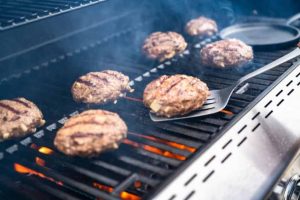
Secondly, you want to be sure that the grill is not cool, warm or almost there, but hot. You want that sizzle sound when the patty is placed down, and what this does is it quickly cooks only the outer layer, warming the middle but allowing the beef to release more juice and fats within, which again is what brings flavor to the table, literally.
Last but certainly not least on how to make the perfect burger, is do not flip the patty more than once, as fun as it is. The reason for this being that when your spatula is flipping fast and flying around, so are the precious flavors of your burger, as the more you cook the more juice is released, and the more flipping you do the more of that juice is lost in the flames.
Place the burger on the hot grill, ensuring that the contact has a sizzle, and let the magic happen for about 4 to 5 minutes before flipping it for the first and final time, using a meat thermometer to test where the temperature of the middle is at for the rest of the time.
Another way of making this delicious dish is in a skillet either on the grill or on the stove, keeping the valuable fats and juices. Unlike grilling in which liquids from the meat drip down into the heat and never return, cooking in a skillet allows the fats and juices from the patty to stay close, thus giving it more sensory pleasures. You can also use additional cooking techniques when using a pan or skillet, such as basting, which almost returns the juices lost and keeps the meat as moist as possible during high-temperature cooking.
The Toppings
Just as important as choosing the right meat on how to make the perfect burger, the toppings you add may be what makes a hamburger great or not so much, so pay close attention to this as well. When you think of common additions to be placed on the burger, your mind would probably drift towards cheese, lettuce, tomato, onion, mustard and ketchup, and while these are used regularly, they aren’t the only ones, but let’s break down these common ingredients before anything else.
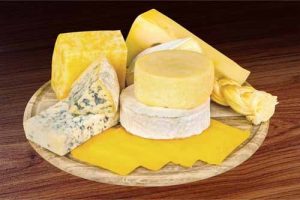
Whoever thought to put cheese on top of a burger should receive some sort of honor because they had one of the best ideas known to man, and it can completely alter the taste of the entire dish if the right cheese is chosen. Your options are not limited to just American cheese, as there are countless varieties of cheeses that may pair with your perfect burger in a more divine way, pleasing your taste buds greatly. Next time you make a burger try adding cheddar, blue cheese, Colby, Monterey Jack, or swiss to enhance the eating experience.
Greens add not only more flavor to a dish, but also contribute a pleasant brightness and color that is appealing to the visual senses, as we eat with our eyes first. The right lettuce to top a burger can add a crisp, refreshing crunch to every bite, and while the options are smaller than the cheeses, there are more than romaine, although a good head of it can be delicious.
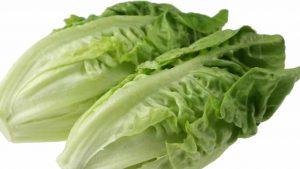
Bitter greens such as arugula, escarole, and radicchio add contrast to the rich fat in the meat but blend effortlessly into the overall flavor of the meal. Red leaf lettuce and green leaf lettuce are also great alternatives to romaine, or additions if greens are not commonly put on your burgers. To keep the crisp character of the leafy greens, it is important to note that handling them too much or vigorously will cause them to lose their bounce and volume. If you are met with a large head, wash and dry gently and use scissors to cut the greens, being sure not to crush them.
There really isn’t much to say for tomatoes, as most varieties pair well with any meat. You can explore the different kinds of tomatoes, as there are quite a lot, for example, yellow tasteful, beefsteak, Cherokee purple, early grey, or Brandywine. Any one of these would be a delightful change to the common “on the vine” variety.
Onions are a staple ingredient in many dishes, but they are versatile when used with a good beef burger, as you can have them cooked, raw, thin or thick. The most commonly used type of onion, in regards to a burger, are red onions and that is because they are on the sweeter side of the spectrum which allows you to more easily eat them raw.
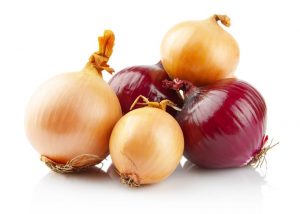
The other types have more of an aggressive punch when eaten raw, which is why they are mainly used for cooking and to bring flavor to hot dishes. If you want to explore eating them raw, adding thinly sliced rings on top of the juicy meat, then be our guest.
Yellow and sweet Vidalia onions are closest to the red onion, as they still retain somewhat of a sweet flavor but are definitely more intense while the white onion is the strongest in terms of its flavor profile, so having it very thin is probably a good idea. Never underestimate, though, the power of caramelized onions, as they can add a welcomes richness to the dish if so desired.
Ketchup and mustard go together so well and with so many different things, yet they are so far from one another when flavor and senses come into play. There aren’t very many varieties of ketchup, as it is tomatoes with other flavoring added for special blends, but for mustard, it’s a different story.

You’ve got yellow mustard, honey, dijon, honey-dijon, brown, and more, all of which can be fantastic additions to your dish. There truly isn’t a “best mustard”, as it is purely up to what appeals to your senses, but it could be noted that contrast in a meal is just as important as flavor harmony.
If the meat used has been coated with a sweet barbecue sauce, opting for honey mustard would be sweet on sweet, possibly overdoing it. Instead go for a honey-dijon, which is still sweet but has a bigger kick from the vinegar in the dijon, or a spicy brown which is bolder in both flavor and heat.
The Bread
We all love it, and could eat it by itself for the rest of our lives because nothing truly beats freshly baked bread, so why are you still using plain old hamburger buns? Not that there is truly anything wrong with them! As with cheese, there are so many different kinds all around the world, and while not every type of bread is made to be used like a bun, there are many that can be.
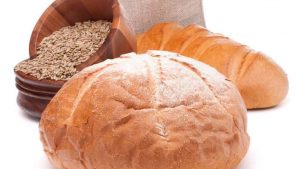
A classic brioche bun, one of our favorites, can give you a rich and tender texture but not take away from the overall flavor of the meat or other burger additions. If you want to branch out a little and serve a less traditionally used bun, try using sourdough bread which has a wonderfully unique flavor and feel, and due to its sturdy crust it can hold larger servings of meat and toppings, so you can pile high and it won’t get weighed down or soggy.
When you have your bun picked out, to add the texture, crunch, and flavor always lightly toast the bun prior to building your burger. You can do this in the oven, in a pan or on the grill alongside your burgers. Brush the open sides of the bun with butter or oil and place face down to lightly toast and warm the outer edge. This keeps your bun from getting soggy from the juices of the burger and your toppings.
Final Thoughts on How to Make the Perfect Burger
Did you think that a dish so simple at first glance could ever be something so complicated at heart? If you didn’t, then this should have prepared you at least a little more for your future cookouts and changed how you look at this dish in a positive light.
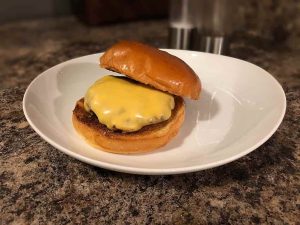
Remember, quality matters when creating good flavors, and exploration of different, less traditional flavors or methods of cooking is a good way of developing individual tastes, textures, and aromas. This classic American dish, like any dish, should be respected in all that offers in terms of sensory stimulation, how it makes us feel, and the people it brings together.
The hamburger is more than just a piece of ground beef and some bread, it’s a delicate combination of individualistic ingredients and will be enjoyed for generations to come.
How to make the perfect burger is truly up to what you consider to be your perfect burger. We are here to give you some ideas on things to try. Let us know what you like on your burger. We love to hear from you.
Keep lovin’ your burgers!

